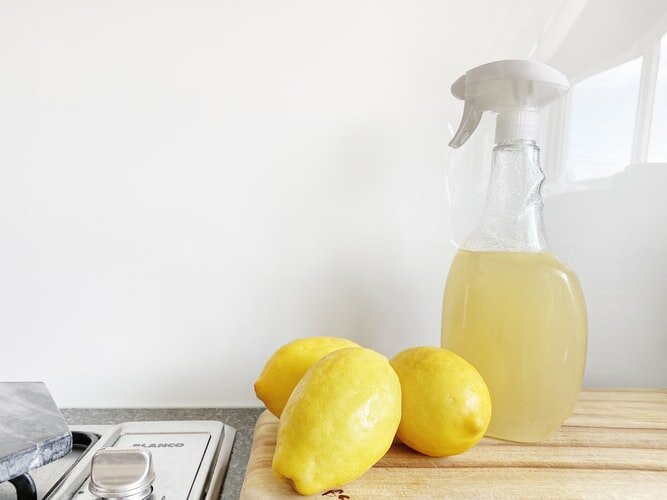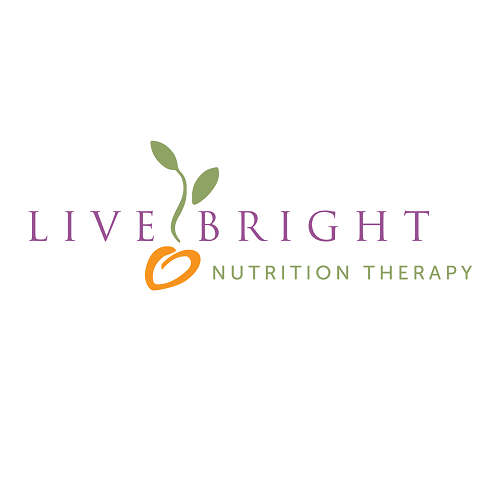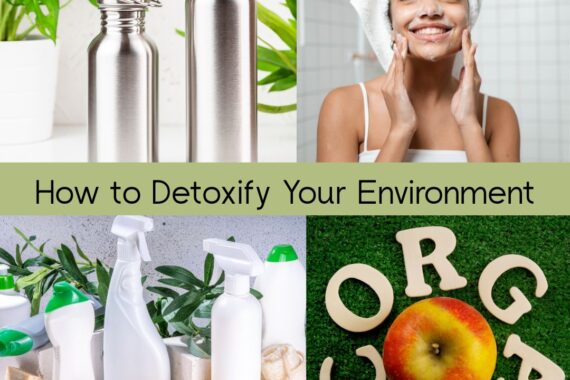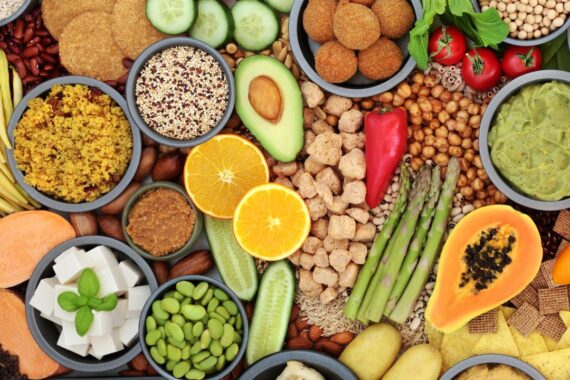
Seven Ways To Do An Environmental Detox
Our bodies are remarkably evolved for dealing with toxins. But we live in an increasingly toxic world. Much more toxic than the world our ancestors lived in, even from 100 years ago. We are exposed daily to all sorts of environmental toxins and chemicals.
- Many foods contain pesticides, additives, food dyes and preservatives.
- Plastics leach into our food and water.
- Tap water contains chlorine, fluoride, and various contaminants.
- The air in our homes contains dust, particulates, fumes and gasses from carpet and furniture.
- Cosmetics and personal products contain chemicals that are absorbed through our skin.
- Chemicals in soaps, detergents and cleaning products are inhaled through our lungs and absorbed through our skin.
- Artificial fragrances in air fresheners, candles and personal products are absorbed through our lungs.
- Medications must be metabolized and eliminated.
- Pollution in the outdoor air from vehicles, factories and roads is absorbed through our lungs.
- Electromagnetic frequencies from cell phones, WiFi and Bluetooth disrupt our own energies.
Xenoestrogens
Many toxins are endocrine disruptors, interfering with the body’s hormones. In particular, xenoestrogens mimic the body’s natural estrogens. They bind to estrogen receptors (found on most cells), and have a much stronger estrogen effect than the body’s own estrogens. These xenoestrogens have been linked to altered reproductive function and growth and development problems in children, along with an increased risk of obesity, estrogen-dependent cancers and cardiovascular problems.
According to the National Institute of Environmental Health Sciences, the following chemicals commonly found in households and work settings are endocrine-disrupting chemicals:
- Bisphenol A (BPA) — used to make polycarbonate plastics and epoxy resins, which are found in many plastic products including food storage containers
- Dioxins — produced as a byproduct in herbicide production and paper bleaching, they are also released into the environment during waste burning and wildfires
- Perchlorate — a by-product of aerospace, weapon, and pharmaceutical industries found in drinking water and fireworks
- Perfluoroalkyl and Polyfluoroalkyl Substances (PFAS) — used widely in industrial applications, such as firefighting foams and non-stick pan, paper, and textile coatings
- Phthalates — used to make plastics more flexible, they are also found in some food packaging, cosmetics, children’s toys, and medical devices
- Polybrominated diphenyl ethers (PBDE) — used to make flame retardants for household products such as furniture foam and carpets
- Polychlorinated biphenyls (PCB) — used to make electrical equipment like transformers, and in hydraulic fluids, heat transfer fluids, lubricants, and plasticizers
- Triclosan — may be found in some anti-microbial and personal care products, like liquid body wash
How the body gets rid of toxins
Toxins enter the body through ingestion, inhalation or absorption through the skin. These toxins circulate in the blood. The liver metabolizes and neutralizes them through two phases of detoxification, each of which needs enough specific nutrients to get the job done. The toxin metabolites combine with bile and go to the digestive tract, where they are eliminated via the kidneys or colon. If a person isn’t eliminating on a daily basis, the toxins are not cleared properly and some can be reabsorbed into the body. Toxins are also released through sweating and exhaling.
If the body’s detoxification pathways are overburdened or can’t metabolize toxins, they are stored in tissues, commonly fat tissue. This is why many weight loss programs begin with a cleanse.
Supporting the body’s detoxification pathways through periodic cleanses and daily good detoxifying habits goes a long way (that’s a subject for another article). But detoxing can be looked at another way too. That is, avoiding and protecting ourselves from environmental toxins gives our bodies fewer toxins to deal with in the first place. Think of it as doing an environmental cleanse.
Seven Ways to Detoxify Your Environment
Each of these seven areas contributes to the body’s toxic load. The good news is that there are steps you can take in each area to lessen the load.
1. Detoxify Your Food
Several sources of toxins are related to the food we eat.
- Pesticides (organophosphates) are sprayed on crops that we eat or that livestock eat. Grains are often sprayed with pesticides so that they can all be harvested at the same time. Residue remains on the plant and may or may not be able to be washed off.
- Animals in concentrated animal farms and farmed fish may be given antibiotics and hormones. These can remain present in their meat.
- Mercury can be found in certain fish. As the bigger fish eat the little fish, more mercury accumulates in the big fish’s flesh.
- Plastics used for food packaging and storage, and the linings of cans, contain BPA and phthalates. Microplastics are found in our food. This effect is made worse when the plastic is heated.
- Heterocyclic amines (HCAs) and Polycyclic aromatic hydrocarbon (PAH) are produced in meats charbroiled on the grill.
What you can do:
- Buy fresh food when you can. Minimize exposure to can linings.
- Eat organic as often as you can to minimize exposure to pesticides. This includes fruits, vegetables, dairy, grains and legumes. Eat pastured or organic meats. Refer to the Environmental Working Group’s Dirty Dozen and Clean Fifteen lists for produce.
- Eat wild fish that are low in mercury. See Monterey Bay Seafood Watch for the safest choices.
- Limit grilled and charbroiled meats.
- Never heat food in plastic wrap, containers or plates.
- Use non-plastic food storage containers, such as glass or Pyrex, including for freezer storage. Use cloth/mesh refrigerator bags instead of plastic.
2. Detoxify Your Water
There are many sources of toxins in our water, even municipal tap water.
- Agricultural practices, such as a pesticides and synthetic fertilizers, leach into groundwater.
- Industrial practices can leach chemicals into waterways and groundwater (e.g., formaldehyde, phenols, phthalates, pesticides, PCBs)
- Medications that were disposed of improperly can be found in municipal water sources.
- Purification processes allow for chlorination and ozone being added to the water.
- Copper, lead and PVC pipes can add heavy metals and chemicals to the water.
- Plastic water bottles leach plastics into the water (and are terrible for the environment)
What you can do:
- Use some sort of water filtration system. There are whole-house systems or systems for filtering drinking water. Charcoal/carbon filter, reverse osmosis, distillation and ion exchange systems are examples of filtration systems. The following are examples of different drinking water filters.
- The refrigerator filter
- Brita filter system
- Berkey countertop and travel bottle
- Aqua-Tru countertop
- Use glass or stainless steel drinking bottles and refill them with filtered water.
- Avoid water bottled in plastic containers.
- Do research about how bottled water is sourced, as there are no regulations about the purity of bottled water.
- Buy shower filters to filter out chlorination that evaporates into the air during warm showers.
3. Detoxify Your Indoor Air
Indoor air can be more polluted than outdoor air. Many items in the home can release (“off-gas”) toxins into the air, such as formaldehyde, phthalates, xylene, benzene, trichloroethane and volatile organic compounds. These come from:
- Air fresheners and scented products (e.g., candles)
- Cigarettes or vaping
- Cleaning products
- Nail polish
- Flooring
- Paint
- Carpets
- Carpet shampoo
- Mattresses
- Furniture
- Dry cleaning chemicals
- New clothing
- Cooking oils at high temperatures
- Chemicals related to hobbies
What you can do:
- Buy renewable, natural and organic home products when possible (e.g., mattresses, rugs).
- Clean air ducts and air vents on a regular basis.
- Change the filter for your heating/cooling system regularly.
- Open windows and use a ventilation fan when cooking.
- Open windows and use a ventilation fan when painting, staining and doing hobbies with chemicals.
- Use air purifiers in rooms where you spend the most time (e.g., bedroom, office, kitchen). HEPA filters are most common. Other types include ionization activators, carbon filters, and electrostatic filters.
- Put plants throughout the area. They clean the air.
4. Minimize Heavy Metals
Aluminum, mercury, lead, cadmium are examples of heavy metals that can be in your house. These can come from many sources, including cookware, lead paint, tap water, personal care products, and home furnishings.
What you can do:
- Remove shoes when you come into the house so as not to track heavy metals into the carpet.
- Lead paint fragments can be found in dust particles. Keep the home well dusted. Clean the vents and ducts regularly. Consider having old lead paint completely removed.
- Don’t use aluminum or Teflon nonstick pans. Instead, use cast-iron, ceramic and stainless steel pots and pans.
- Don’t use aluminum foil for cooking.
- Use aluminum-free antiperspirant/deodorant.
- Minimize the amount of soda/seltzer you drink from aluminum cans.
- Limit certain fish high in mercury – ahi tuna, bigeye tuna, king mackerel, and swordfish.
- Consider having amalgam fillings removed by an expert if you test high for mercury.
5. Detoxify Your Personal Care Products
Personal care products are absorbed through the skin and into the blood. These products include skin care, hair care, oral care, cosmetics, feminine hygiene products, and deodorant. Many common products contain fragrances, solvents, and preservatives that are toxins.
Specific chemicals to avoid include:
- Sodium or Ammonium Lauryl or Laureth Sulphate
- Sodium Methyl Cocoyl Taurate
- Sodium Lauroyl or Cocoyl Sarcosinate
- Cocomidopropyl Betaine
- TEA and DEA compounds
- Polyethylene Glycol
- Quarternium – 7,15,31,60
- Sorbic Acid
- Parabens
What you can do:
- Use the following websites to learn about the products you use.
- Don’t buy cheap personal care products. Look for natural products with natural ingredients.
- Use organic feminine products.
6. Detoxify Your Cleaning Products
Most common cleaning products contain harmful chemicals and fragrances. Some can even be dangerous when mixed together.
What you can do:
- Use these websites to learn about the cleaning products that are low in harmful chemicals and more eco-friendly.
- Consider making your own cleaning supplies with vinegar, baking soda and borax.
7. Minimize EMF Radiation
Electromagnetic frequencies (EMFs) have increased significantly over the last decade. More cell phone towers, WiFi and Bluetooth have all added to the “electric smog” that we are exposed to. There is also concern about increasing EMF radiation that comes with the new 5G technology. There are some studies that conclude that low-frequency EMFs are “possibly carcinogenic,” and that there is a relationship between cell phone use and cancer. Certain people have noticeable negative reactions to EMFs, with symptoms including dizziness, confusion, fatigue, depression, sensitivity to light, tingling, headaches, metallic taste in the mouth, infertility, sleep disturbances and problems with concentration and memory. This topic is beginning to be of more interest in the health fields. The current recommended advice involves avoidance and protection.
What you can do:
- When you turn off your phone or put it on Airplane Mode, it no longer emits EMFs in search of something to connect to. At night, and when you don’t need your phone to be connected, put it on Airplane Mode. Make sure that WiFi and Bluetooth turn off at the same time, or you may need to manually turn them off.
- Limit the time that you’re talking on the phone and therefore the time that the phone is against your head.
- Make phone calls using the speaker phone or other hands-free device. The signal strength falls away quickly as you create distance between your phone and your ear.
- Don’t carry your cell phone directly against your body.
- Phones increase their emissions significantly when the signal is low. Try to use your phone in places where you have the maximum number of signal bars – by a window or outdoors.
- EMFs interfere with proper hormone production and restorative sleep. Ideally, turn off your WiFi at night. If you can’t, sleep away from your phone and with it on Airplane Mode (or turned off).
- With a landline, use corded phones. Cordless phones emit radiation.
- There are various levels of shielding available, including cell phone covers, shielding curtains, shielding wallpaint, and grounding blankets. The effectiveness of these is a topic of debate.
While it may seem overwhelming to make so many changes, they don’t need to be made all at once. Even one change can make a big difference. Simply filtering your water and buying mostly organic produce are two easy steps that have a big impact.
Step by step, you can create a healthier home and work environment.



